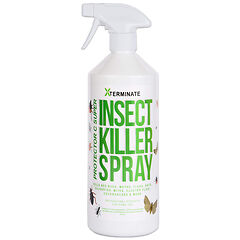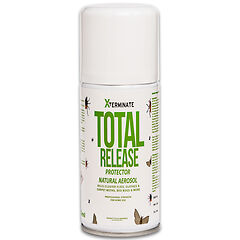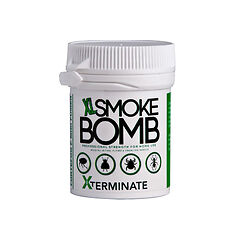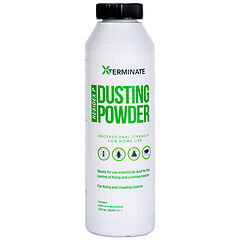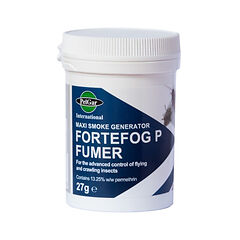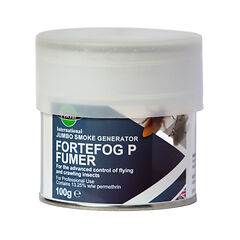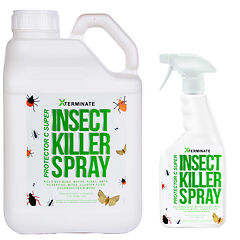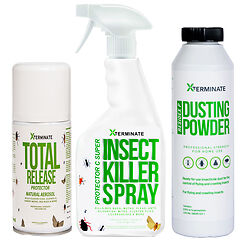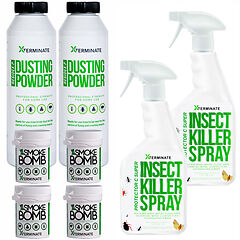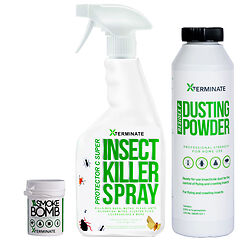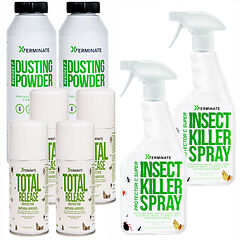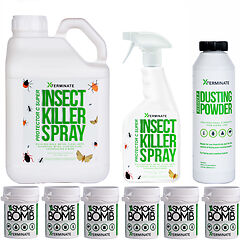Carpet Beetles
Carpet beetles are one of the country's most common pests. Their larvae can quickly take over your home and chew through clothes, carpets, upholstery, and more - but we've got the products and the knowledge to stop them.
Carpet Beetles
Carpet beetles shouldn’t be taken lightly. While they aren’t interested in humans and don’t carry any harmful diseases, they can destroy carpets, curtains, and clothing in a flash. If you already know about carpet beetles, feel free to browse our range of professional-quality carpet beetle control products above. However, we’d recommend giving our buyer’s guide a read below; we’ll tell you everything you need to know about these pests so you know what you need to do to get rid of them as quickly as possible.
Carpet Beetle Larvae
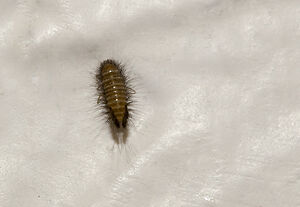 The most important thing to remember about carpet beetles is that it’s not actually the beetles themselves that cause the damage – it’s the larvae. The adult beetles mainly eat pollen and live outdoors, so you probably won’t see much of them. However, at the end of spring, they start looking for warm, quiet spots to lay their eggs, which leads them into our homes. The grubs that hatch from these eggs feed on hair, animal fur, feathers, paper, wool, cotton, and other natural fibres – and they have big appetites!
The most important thing to remember about carpet beetles is that it’s not actually the beetles themselves that cause the damage – it’s the larvae. The adult beetles mainly eat pollen and live outdoors, so you probably won’t see much of them. However, at the end of spring, they start looking for warm, quiet spots to lay their eggs, which leads them into our homes. The grubs that hatch from these eggs feed on hair, animal fur, feathers, paper, wool, cotton, and other natural fibres – and they have big appetites!
Identifying Carpet Beetles
All of the above is really important to know as carpet beetles have overtaken clothes moths as the most common fabric-chewing pest in the UK. This is partly because they’re often misidentified as carpet moths and are incorrectly treated as a result. While the adult beetles obviously look quite different to fully-grown moths, it’s easy to get beetle larvae and moth caterpillars confused as they look quite similar.
Carpet beetle larvae are small, brownish bugs that are covered in bristly hairs, a feature which earned them the deceptively cute nickname of “woolly bears”. They also have lighter-coloured markings that look like little segments along their body. Moth caterpillars tend to be larger and lighter-coloured, so they’re easier to spot. While it’s unpleasant, be sure to closely inspect anything you find crawling around your wardrobe or carpets – it’ll save you a lot of headaches in future!
Signs of a Carpet Beetle Infestation
The problem with identifying carpet beetles is you have to actually catch one first, which is easier said than done! Both the larvae and the adult beetles are very small – the adults are about 3mm long, whereas the larvae are actually slighter larger, around 4-5mm – and their mottled pattern makes them blend into their surroundings. This means you’ll likely see signs of an infestation before you lay eyes on the bugs themselves.
Holes in Fabric
Unfortunately, this is the first sign many people notice! Carpet beetles aren’t picky about what they eat, but you’ll find they tend to focus on one area so the holes will be concentrated around one specific part of your fabric. The grubs also like to follow seams and eat threads so you might notice loose stitching around your clothes, too.
If your fabric is covered in holes in a seemingly random pattern, it’s more likely that you have a problem with moths.
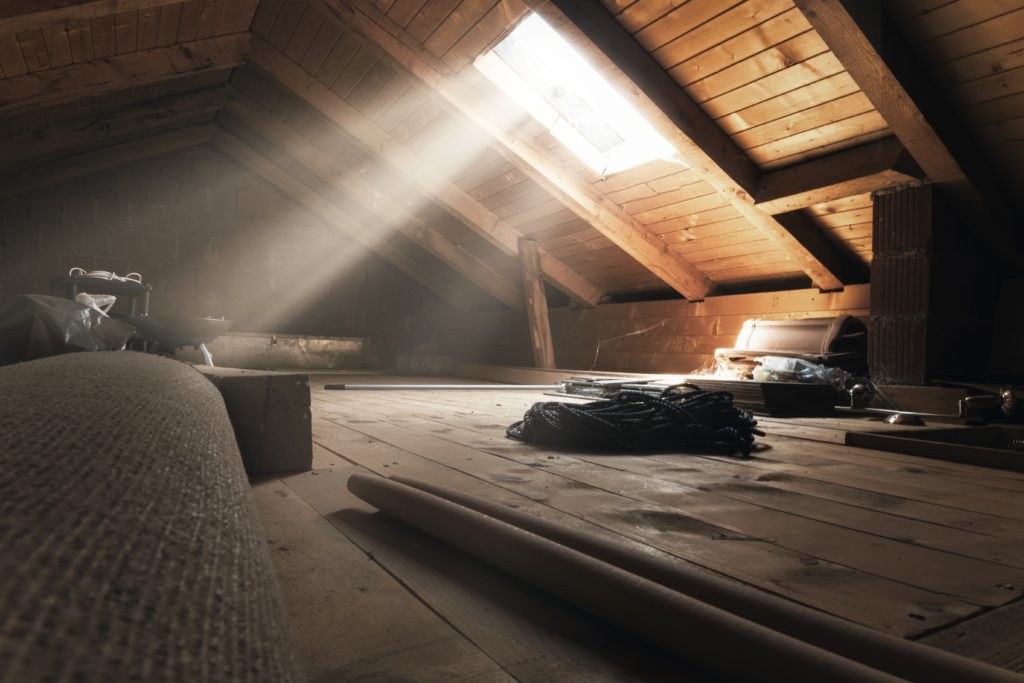 Shed Skin
Shed Skin
Like many insects, carpet beetles will shed their skin as they grow. You may find these empty shells in furniture or in your wardrobe. They can appear in your carpets, too, but as the shells are so small they’re much harder to spot.
Droppings
Beetle droppings (also known as frass) look like black grains of sand and are hard to tell apart from bits of dirt. Unfortunately, if you can see beetle droppings, it means there’s a lot of them, so you likely have a serious infestation on your hands.
Getting Rid of Carpet Beetles
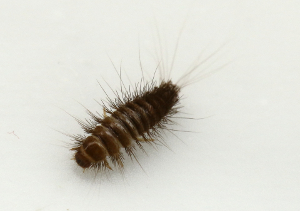 If you’re confident you have carpet beetles, you’ll want to remove them before they cause serious damage to your things. As with most pests, the best way to do this is to use multiple pest control products at once to ensure every corner of your room is covered.
If you’re confident you have carpet beetles, you’ll want to remove them before they cause serious damage to your things. As with most pests, the best way to do this is to use multiple pest control products at once to ensure every corner of your room is covered.
Aerosol Sprays
While the adult beetles don’t cause any damage themselves, a single adult can lay up to 100 eggs. This means you’ll still want to take care of them before they can do that! It’s good to keep a can of FCIK (Flying and Crawling Insect Killer) around the house so you’re always prepared if you ever spot one. The aerosol contains pyrethrins, naturally-occurring chemicals which attack the brains of carpet beetles, killing them instantly. You can also use the spray as a flushing agent to check if any pests are lurking beneath your carpet or in the back of your wardrobe. Just stand around 5cm away from the target area and spray the aerosol into nooks and crannies to see if anything comes crawling out.
Surface Sprays
Carpet beetle larvae can’t fly, so covering your walls, floors, and loft spaces with a surface spray is arguably the best way to get rid of them. Our multi-purpose Insect Killer Spray is safe to be used on hard surfaces as well as your soft furnishings such as carpets, curtains, and upholstery. It’s not advisable to use it directly on your clothing as it’s not meant to be in contact with your skin all day, but you can spray it around the inside of your wardrobe to protect your best clothes.
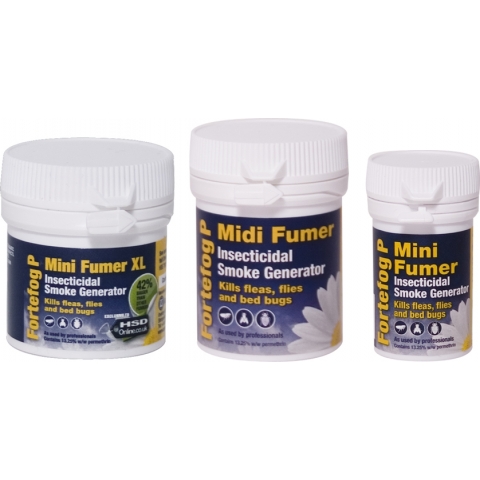 Smoke Bombs
Smoke Bombs
Smoke bombs are the best way to distribute insecticides into every nook and cranny of your room. If you have a severe carpet beetle problem, a fumer might well be the quickest and easiest way to get rid of most of them at once. Smoke can penetrate between floorboards and gaps in skirting where other pest control products might not. It can also be used to drive pests out from hiding and onto other surfaces which are coated with surface spray, so it should be a vital tool in your arsenal.
Stopping Carpet Beetles from Coming Back
You should consider re-treating around 7-10 days after your initial treatment to mop up any remaining pests. Before that, though, there are a few other steps you can take to prevent carpet beetles from returning.
If you have any valuable clothing or blankets, make sure you protect them with plastic sheets to stop the adult beetles from laying their eggs on them. You should do this with any clothing made from cotton, wool, or leather – the grubs won’t be interested in synthetic fibres like polyester. Do the same with any important documents or sentimental pictures, too – a few carpet beetle grubs can chew through a photo album pretty quickly!
You should also make sure you inspect your loft and chimney spaces for any old bird nests. Carpet beetles love bird nests as they’re warm, sheltered, and full of food (like feathers, old twigs, and other natural material). You should also make sure your loft space is properly sealed, with no obvious cracks or holes anywhere. It’s impossible to completely seal your home against these tiny beetles, of course, but you should still try and make it as tricky as possible for them to find a way in.
When to Worry About Carpet Beetles
Carpet beetles are most active in the late spring and early summer. This is their mating season, so they’ll start moving indoors and laying eggs around this time. Be extra-vigilant around this time – check your chimney and loft space for bird nests and take measures to protect valuable fabrics and documents.



